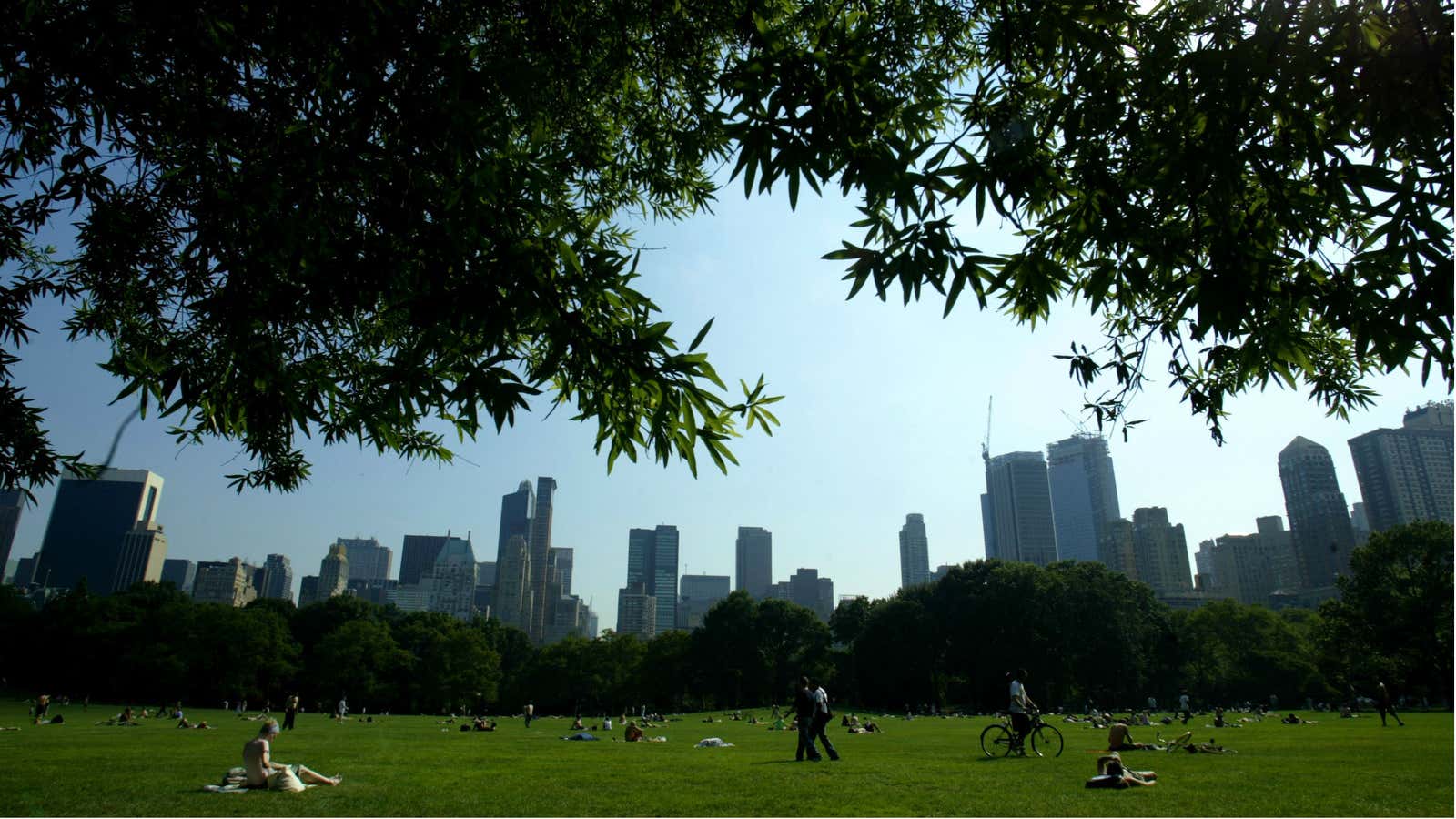The benefits of green spaces to human health and the environment include slowing soil erosion and potentially even making us kinder.
Now there’s evidence that they may help school children focus, too.
A new study published in the Proceedings of the National Academy of Science (paywall) found that over the course of a year, children exposed to more green areas at school in Spain had slightly better memory and focus over the course of a year.
Researchers at the Pompeu Farba University in Barcelona, Spain looked at roughly 2,500 students aged 7 to 10 and the amount of green space they had exposure to based on the location of their home and school. Using a satellite image of the area of study, the scientists applied a computer model that highlighted green areas based on visible and infrared light reflections and then ranked different areas on a grid based on a vegetation index. Every three months, researchers then gave the children computer tests to assess their working memories—the ability to remember think about existing knowledge—and attention spans.
Researchers found that the children who were exposed to more green space at school showed an average of a 5% increase in working memory and were 1% more focused over the course of the year. The gains are small, but they are statistically significant. The researchers speculated that the gain may be due to plants’ ability to decrease the amount of carbon in the air generated from cars and trucks.
It’s worth noting that the research shows a correlation, rather than causation, between cognitive development and green areas; it can’t definitely say whether more plants around school campuses lead to improved mental finesse.
